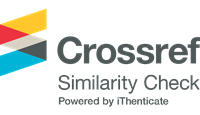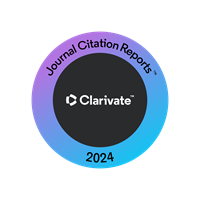Genetic characterization of Zeyheria tuberculosa progenies and evaluation for formation of a seed orchard
Resumo
Zeyheria tuberculosa, a native species of Brazil known for its significant potential in silviculture and genetic improvement, holds prominence among various species. In this study, our objective was to assess the diversity, genetic structure, and feasibility of establishing a seedling seed orchard (SSO) for this species. A total of 71 progenies were collected from different locations and were used in our experiment in Ijaci - MG. We genotyped 92 individuals (nine families with eight individuals, two families with seven individuals, and one family with six individuals), specifically selecting those with the highest predicted genetic values, using ten ISSR primers. The molecular markers employed effectively detected polymorphism (PIC = 0.44). The population exhibited moderate to high genetic diversity, as evidenced by observed (AO = 2.00) and effective alleles (AE = 1.61), Nei's diversity index (H* = 0.35), and Shannon's diversity index (I* = 0.52). Molecular variance analysis indicated significant genetic differentiation between the progenies (Φst = 0.19), yet the majority of the variation was observed within them (80.1%). Employing a Bayesian approach, we identified the formation of two distinct genetic groups, further confirming the non-genetic structure of the population. These findings affirm the potential of the Z. tuberculosa progenies to contribute to the establishment of a seedling seed orchard, supporting genetic improvement strategies and the conservation of the species' genetic diversity.
Downloads
Referências
Araújo, L. B. R., Barroso Neto, A. M., Pires, K. R. A., & Bertini, C. H. C. M. (2019). Diversidade genética em pinhão manso com base em marcadores ISSR. Nativa, 7(4), 363-370. DOI: http://dx.doi.org/10.31413/nativa.v7i4.6571
Auguie, B., & Antonov, A. (2017). Miscellaneous functions for “Grid” graphics. R package version 2.3. Retrieved on Nov. 1, 2022 from https://cran.r-project.org/web/packages/gridExtra/gridExtra
Beech, E., Rivers, M., Oldfield, S., & Smith, P. P. (2017). GlobalTreeSearch: The first complete global database of tree species and country distributions. Journal of Sustainable Forestry, 36(5), 454-489. DOI: https://doi.org/10.1080/10549811.2017.1310049
Bertoni, B. W., Filho, S. A., Martins, E. R., Filho, C. F. D., França, S. C., Pereira, A. M. S., … Filho, J. A. F. D. (2007). Genetic variability in natural populations of Zeyheria montana mart. from the Brazilian Cerrado. Scientia Agricola, 64(4), 409-415. DOI: https://doi.org/10.1590/S0103-90162007000400012
Borges, R. C., Santos, F. M. G., Maia, M. C. C., Lima, P. S. C., & Valente, S. E. S. (2016). Investigating genetic diversity in sapucaia using inter simple sequence repeat markers. Genetics and Molecular Research, 15(3), 1-13. DOI: http://dx.doi.org/10.4238/gmr.15038565
Brandão, M. M., Vieira, F. A., Nazareno, A. G., & Carvalho, D. (2015). Genetic diversity of neotropical tree Myrcia splendens (Myrtaceae) in a fragment-corridor system in the Atlantic rainforest. Flora - Morphology, Distribution, Functional Ecology of Plants, 206, 35-41. DOI: https://doi.org/10.1016/j.flora.2015.07.006
Brasil. (2021). Portaria MMA Nº 561, de 15 de dezembro de 2021. Brasília, DF: Ministério do Meio Ambiente.
Carvalho, P. E. R. (2005). Ipê-felpudo. Colombo, PR: Embrapa Florestas.
Cruz, C. D. (2016). Genes software-extended and integrated with the R, Matlab and Selegen. Acta Scientiarum. Agronomy, 38(4), 547-552. DOI: https://doi.org/10.4025/actasciagron.v38i4.32629
Doyle, J. J., & Doyle, J. L. (1987). A rapid DNA isolation procedure for small quantities of fresh leaf tissue. Phytochemical Bulletin, 19(1), 11-15.
Earl, D. A., & Vonholdt, B. M. (2012). STRUCTURE HARVESTER: a website and program for visualizing STRUCTURE output and implementing the Evanno method. Conservation Genetics Resources, 4, 359-361. DOI: https://doi.org/10.1007/s12686-011-9548-7
El-Kassaby, Y. A., Wang, Q., Wang, T., Ratcliffe, B., Bi, Q. X., Wang, Z., ... Guan, W. (2019). Concept for gene conservation strategy for the endangered Chinese yellowhorn, Xanthoceras sorbifolium, based on simulation of pairwise kinship coefficients. Forest Ecology and Management, 432, 976–982. DOI: https://doi.org/10.1016/j.foreco.2018.10.045
Evanno, G., Regnaut, S., & Goudet, J. (2005). Detecting the number of clusters of individuals using the software Structure: a simulation study. Molecular Ecology, 14(8), 2611-2620. DOI: https://doi.org/10.1111/j.1365-294X.2005.02553.x
Falush, D., Stephens, M., & Pritchard, J. K. (2007). Inference of population structure using multilocus genotype data: dominant markers and null alleles. Molecular Ecology Notes, 7(4), 574-578. DOI: https://doi.org/10.1111/j.1471-8286.2007.01758.x
Galili, T., Benjamini, Y., Simpson, G., Jefferis, G., Gallota, M., Renaudie, J., … Bradley, D. (2020). Extending 'dendrogram' functionality in R. R package version 1.13.4. Retrieved on Nov. 1, 2022 from https://cran.r-project.org/web/packages/dendextend/dendextend
Idrees, M., & Irshad, M. (2014). Molecular markers in plants for analysis of genetic diversity: A review. European Academic Research, 2(1), 1513-1540.
Indústria Brasileira de Árvores [IBÁ]. (2021). Relatório anual IBÁ 2021. Brasilia, DF: Indústria Brasileira de Árvores.
Instituto Nacional de Meteorologia [INMET]. (2021). Normais climatológicas do Brasil. Retrieved on Mar. 27, 2022 from https://portal.inmet.gov.br/normais
Kassambara, A. (2020) 'ggplot2' Based Publication Ready Plots. R package version 0.4.0. Retrieved on Nov. 1, 2022 from https://cran.r-project.org/web/packages/ggpubr/ggpubr
Kassambara, A., & Mundt, F. (2020). Factoextra: Extract and visualize the results of multivariate data analyses. R package version 1.0.5. Retrieved on Nov. 1, 2022 from https://CRAN.R-project.org/package=factoextra
Lefèvre, F., Boivin, T., Bontemps, A., Courbet, F., Davi, H., Gillmann, M. D., … Pichot, C. (2014). Considering evolutionary processes in adaptive forestry. Annals of Forest Science, 71, 723-739. DOI: https://doi.org/10.1007/s13595-013-0272-1
Lohmann, L. G. (2015). Bignoniaceae in lista de espécies da flora do Brasil. Rio de Janeiro, RJ: Jardim Botânico do Rio de Janeiro. Retrieved on Mar. 27, 2022 from http://floradobrasil2015.jbrj.gov.br/FB112305
Lopes, B. C., Ferreira, M. B. D., & Brandão, M. (1996). Sombreamento em pastagens: espécies recomendadas para as diversas regiões do Estado de Minas Gerais. Daphne, 6(4), 7-15.
Lopes, J. D. S., Costa, M. R. J., & Arriel, D. A. A. (2020). Genetic diversity of potential mother trees of Myracrodruon urundeuva Allemão in a remnant population from Brazilian Cerrado using ISSR. Advances in Forestry Science, 7(2), 1017-1024. DOI: http://dx.doi.org/10.34062/afs.v6i2.5621
Lorenzoni, R. M., Soares, T. C. B., Santiago, V. F., Silva, J. A., & Coelho, R. I. (2014). Utilização de marcadores ISSR na avaliação da diversidade genética entre acessos de biribazeiro. Revista Brasileira de Fruticultura, 36(1), 251-257. DOI: https://doi.org/10.1590/S0100-29452014000500029
Maechler, M., Rousseeuw, P., Struyf, A., Hubert, M., Hornik, K., Studer, M., … Murphy, K. (2019). Finding groups in data'': Cluster analysis extended Rousseeuw et al. R package version 2.1.0. Retrieved on Nov. 1, 2022 from https://cran.r-project.org/web/packages/cluster/cluster
Magistrali, P. R., Cacau, F. V. P., Nascimento, J. F., & Magistrali, I. C. (2022). Tamanho de recipientes e luminosidade na produção de mudas Zeyheria tuberculosa (Vell.) Bur. (Bignoniaceae). Revista Brasileira de Ciências da Amazônia, 11(1), 1-8. DOI: https://doi.org/10.47209/2317-5729.v.11.n.1.p.1-8
Mendonça, A. R., Silva, J. C., Aozani, T. S., Silva, E. R., Santos, J. S., Binoti, D. H. B., & Silva, G. F. (2018). Estimação da altura total de árvores de ipê felpudo utilizando modelos de regressão e redes neurais artificiais. Revista Brasileira de Biometria, 36(1), 128-139. DOI: https://doi.org/10.28951/rbb.v36i1.154
Mijnsbrugge, K. V., Bischoff, A., & Smith, B. (2010). A question of origin: Where and how to collect seed for ecological restoration. Basic and Applied Ecology, 11(4), 300-311. DOI: https://doi.org/10.1016/j.baae.2009.09.002
Mojena, R. (1977). Hierarchical grouping methods and stopping rules: an evaluation. The Computer Journal, 20(4), 359-363. DOI: https://doi.org/10.1093/comjnl/20.4.359
Nei, M. (1978). Estimation of average heterozygosity and genetic distance from a small number of individuals. Genetics, 89(3), 583-590. DOI: https://doi.org/10.1093/genetics/89.3.583
Oksanen, J., Blanchet, F. G., Friendly, M., Kindt, R., Legendre, P., Mcglinn, D., … Wagner, E. (2018). Vegan: Community ecology package. R package version 2.4-5. Retrieved on Nov. 1, 2022 from https://CRAN.R-project.org/package=vegan
Pimenta, J. M. A., Felix, F. C., Araújo, J. S. O., Fajardo, C. G., & Pacheco, M. V. (2022). Selection of ISSR molecular primers for studies of genetic diversity in Handroanthus impetiginosus (Mart. Ex DC.) Mattos. Revista Caatinga, 35(1), 231-238. DOI: https://doi.org/10.1590/1983-21252022v35n124rc
R Core Team (2020). R: A language and environment for statistical computing. Vienna, AT: R Foundation for Statistical Computing. Retrieved on Nov. 1, 2022 from URL https://.R-project.org/
Rajasekharan, P. E., Abdul Kareem, V. K., Ravish, B. S., & Mini, S. (2017). Genetic diversity in Oroxylum indicum (L.) Vent., a threatened medicinal plants from India by ISSR analysis. Indian Journal of Biotechnology, 16(3), 360-368.
Ramalho, A. B., Rossi, A. A. B., Dardengo, J. F. E., Zortéa, K. É. M., Tiago, A. V., & Martins, K. C. (2016). Diversidade genética entre genótipos de Bertholletia excelsa por meio de marcadores moleculares ISSR. Floresta, 46(2), 207-214. DOI: http://dx.doi.org/10.5380/rf.v46i2.41970
Resende, M. D. V. (2016). Software Selegen-REML/BLUP: a useful tool for plant breeding. Crop Breeding and Applied Biotechnology, 16(4), 330-339. DOI: https://doi.org/10.1590/1984-70332016v16n4a49
Slatkin, M. (2017). Gene flow and population structure. Real, LA: Princeton University Press.
Shannon, C. E., & Weaver, W. A. (1949). Mathematical model of communication. Urbana, IL: University of Illinois Press.
Silva Júnior, A. L., Souza, L. C., Pereira, A. G., Caldeira, M. V. W., & Miranda, F. D. (2017). Genetic diversity of Schizolobium parahyba var. amazonicum (Huber ex. Ducke) Barneby, in a forest area in Brazil. Genetics and Molecular Research, 16(3), 1-11. DOI: http://dx.doi.org/10.4238/gmr16039774
Souza, C. V., Nepi, M., Machado, S. R., & Guimarães, E. (2017). Floral biology, nectar secretion pattern and fruit set of a threatened Bignoniaceae tree from Brazilian tropical forest. Flora, 227, 46-55. DOI: https://doi.org/10.1016/j.flora.2016.12.007
Tatikonda, L., Wani, S. P., Kannan, S., Beerelli, N., Sreedevi, T. K., Hoisington, … Varshney, R. K. (2009). AFLP-based molecular characterization of an elite germplasm collection of Jatropha curcas L. biofuel plant. Plant Science, 176(4), 505-513. DOI: https://doi.org/10.1016/j.plantsci.2009.01.006
Teixeira, G. C., Konzen, E. R., Faria, J. C. T., Gonçalves, D. S., Carvalho, D., & Brondani, G. E. (2020). Genetic diversity analysis of two Eucalyptus species using ISSR markers. Ciência Florestal, 30(1), 270-278. DOI: https://doi.org/10.5902/1980509832804
Wilke, C. O. (2019). Streamlined plot theme and plot annotations for 'ggplot2'. R package version 1.0.0. 2019. Retrieved on Nov. 1, 2022 from https://cran.r-project.org/web/packages/cowplot/cowplot
Wright, S. (1978). Evolution and the genetics of populations: variability within and among natural populations. Chicago, US: University of Chicago Press.
Yeh, F. C., & Boyle, T. J. B. (1997). Population genetic analysis of co-dominant and dominant markers and quantitative traits. Belgian Journal of Botany, 129, 156-157.
Zambrano, J., Cordeiro, N. J., Garzon-Lopez, C., Yeager, L., Fortunel, C., Ndangalasi, H. J., & Beckman, N. G. (2020). Investigating the direct and indirect effects of forest fragmentation on plant functional diversity. PLoS ONE, 15(7), 1-16. DOI: https://doi.org/10.1371/journal.pone.0235210
DECLARAÇÃO DE ORIGINALIDADE E DIREITOS AUTORAIS
Declaro que o presente artigo é original, não tendo sido submetido à publicação em qualquer outro periódico nacional ou internacional, quer seja em parte ou em sua totalidade.
Os direitos autorais pertencem exclusivamente aos autores. Os direitos de licenciamento utilizados pelo periódico é a licença Creative Commons Attribution 4.0 (CC BY 4.0): são permitidos o compartilhamento (cópia e distribuição do material em qualqer meio ou formato) e adaptação (remix, transformação e criação de material a partir do conteúdo assim licenciado para quaisquer fins, inclusive comerciais.
Recomenda-se a leitura desse link para maiores informações sobre o tema: fornecimento de créditos e referências de forma correta, entre outros detalhes cruciais para uso adequado do material licenciado.




















































